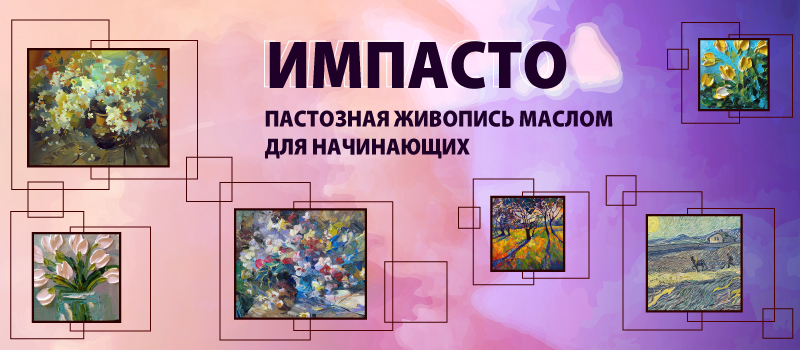
Working with oil paints is very versatile. In addition to the multi-layered technique, many artists prefer pastose painting, also known as impasto.
The word "impasto" itself in translation from Italian means dough or pasta. The technique received this name thanks to the thick and voluminous strokes that are applied with a brush or palette knife on the canvas. What is pastose painting, and how to paint pictures with large strokes will be discussed in this article.
Pastose painting
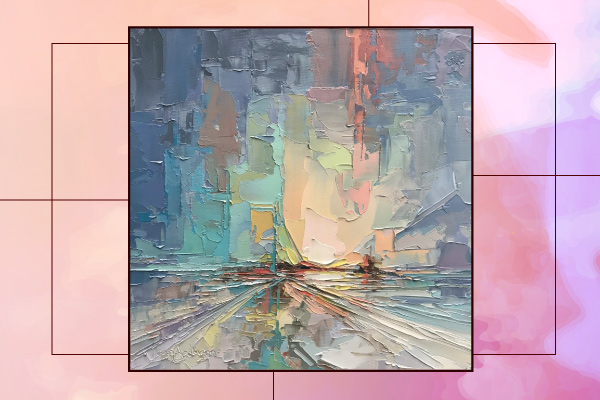
Initially the technique of painting with thick strokes appeared as a way to hide errors and defects in some areas of the painting. Over time, it began to be used for depicting individual elements on the canvas. Well, some artists started using it to create the whole artwork.
With the help of pastose painting, the masters were able to achieve special emotionality and brightness in their pictures. The artworks seem to come to life, conveying the feelings and intention of the author not only through the general plot, palette of colors and composition, but also through the texture of strokes.
The technique itself lies in the fact, that the paint is applied thick and undiluted. As a result, the strokes are voluminous and embossed. Use a brush or palette knife to apply it. And the texture of the stroke is determined by the onslaught or direction of the used tool. Thus, you can create the illusion of three-dimensionality or movement, which has become especially popular among masters working with plein air.
Tools and materials
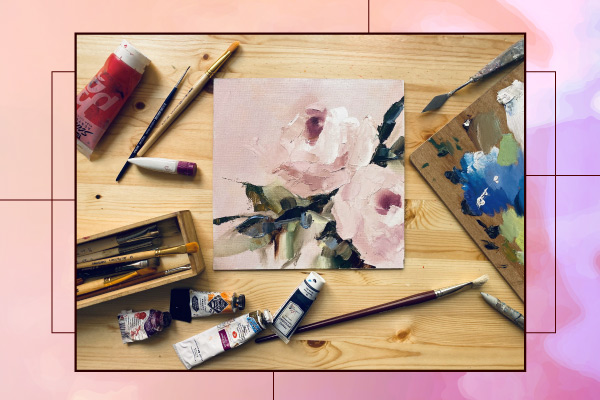
If you decide to try your hand at pastose oil painting, in addition to a supply of paints, you will also need the following tools and materials:
- canvas;
2-4 rectangular wide brushes of different sizes;
- palette knife;
- palette;
- rags or napkins.
Also, it is worth noting that paints are consumed in pastose painting more than in glazing technique. It is important to stock up on the necessary amount of paint so as not to be left without materials in the middle of the painting process.
In addition to oil, you can use acrylic paints or gouache for impasto paintings. Then the process of an artwork drying will not take so much time, but the durability of the picture will also decrease.
Technique of pastose painting
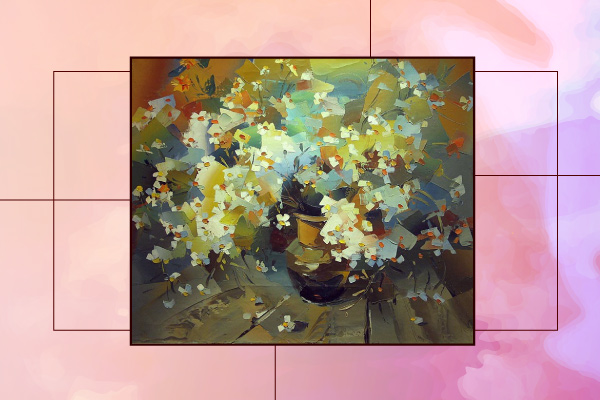
First, you need to prepare the canvas. Apply a layer of neutral paint to do this. And it is better to dilute it with turpentine, so that the oil does not cause slipping. This will degrease the first base coat and promote better adhesion later on. It is also important to wait until the base is completely dry before proceeding with further steps.
You can apply the second layer by squeezing the paint onto the canvas directly from the tube, or first apply it to the palette. It is not necessary to dilute it, the smear should be dense and thick. Here you can play with the direction of the brush and the rush to create certain relief patterns. Also, a palette knife is often used to create a dynamic effect on the canvas. It is not necessary to paint over the entire surface of the canvas. Small gaps will allow you to create a certain play of shadows and textures.
If you need to mix paints, this can be done on a palette, where two or more colors are combined until a homogeneous mass is obtained. Also you can squeeze a few colors directly on a palette knife and mix them on the canvas. This way you can create interesting transitions in relief strokes.
The third layer is applied only after the second has completely dried, and allows you to give an artwork the necessary texture. At this stage the main elements and details are completed or modified. A thin brush is used to paint small objects. If there is no such need, strokes continue to be applied with a palette knife or a wide brush.
At the final stage, the painting is varnished. We remind you that you can start it only after the canvas is completely dry. Since pastose painting involves the use of a large amount of oil paint and the application of thick layers, the drying process will be long. On average, it takes from six months to a year.
Of course, it is not necessary to cover the picture with varnish, but if you want to preserve its original appearance for a long time, then it is better not to ignore this stage. Moreover, after covering with a special protective varnish, the picture becomes brighter, and it will be easier to care for it. Just wipe it down with a slightly damp cloth from time to time. If you do not want to cover your artwork because of an unwanted glossy sheen, you can buy special matte varnishes for paintings from an art store.
Useful Tips
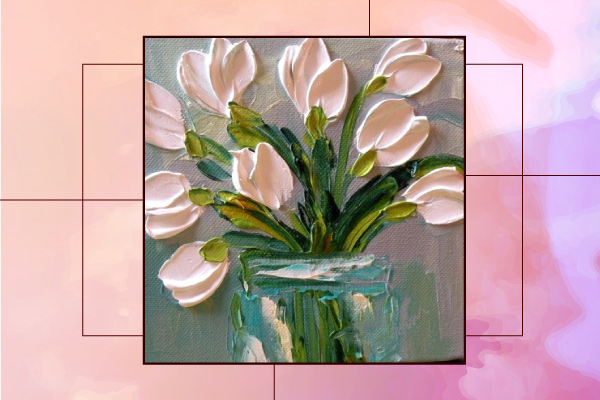
Since the impasto technique, like everyone else, has its own characteristics and nuances, we decided to prepare some tips for you. With their help, you can avoid common mistakes and get even more pleasure from working with pastose painting.
Before starting to work with paints, squeeze them out onto the palette and leave for a couple of minutes to thicken a little.
If the paints are too wet, squeeze them onto the paper first to absorb excess moisture.
If the paints are too dry, add one drop of linseed oil and mix everything until smooth.
If you work on a painting for a long time, periodically put the palette with paints in the refrigerator. This will help maintain the desired consistency for longer.
You can make the paint more viscous by adding a little sand or sawdust. This will also give unusual texture to the strokes.
And most importantly, don't be afraid to experiment. By changing the direction and onslaught of a brush or palette knife, you can achieve a wide variety of effects to create impasto paintings.
Examples of the technique usage in famous artists' paintings
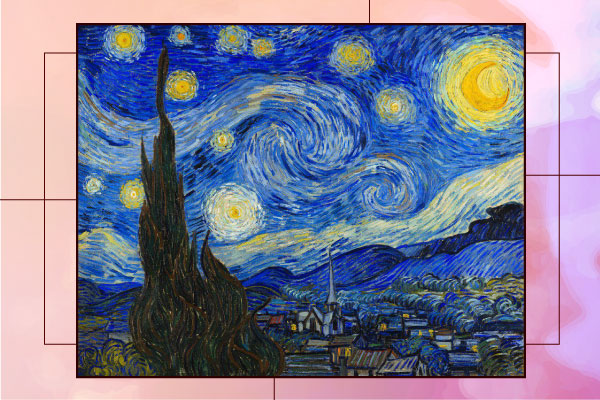
The impasto technique was used by many painters in different historical periods. For example, Baroque artists such as Rembrandt, Hals and Velasquez used impasto to convey the relief of leather, to depict folds of clothing and jewelry. Also, among the world-famous masters, Pierre Renoir, Vincent Van Gogh and Jackson Pollock preferred pastose painting.
You can best evaluate all the versatility and uniqueness of this technique in the paintings "The Starry Night" by Vincent Van Gogh and the self-portrait by Rembrandt Van Rijn.

The earliest work of Leonardo da Vinci
A small painted tile caused quite a stir among the scientists of the art world. This is because some scholars believe that the recently discovered work is Leonardo da Vinci's earliest known work
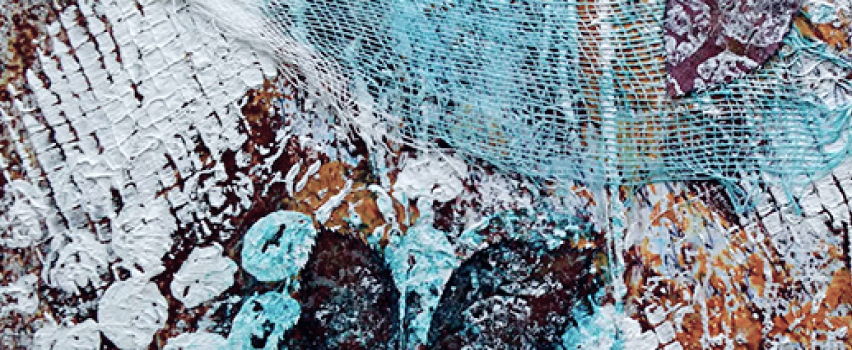
Interesting facts about painting
Paintings hold the secrets of the creator. Sometimes we manage to solve them, but many of them continue to be riddles, or simply stay unnoticed.












Thank you, your review has been sent successfully.
It will be posted on the site after moderation.